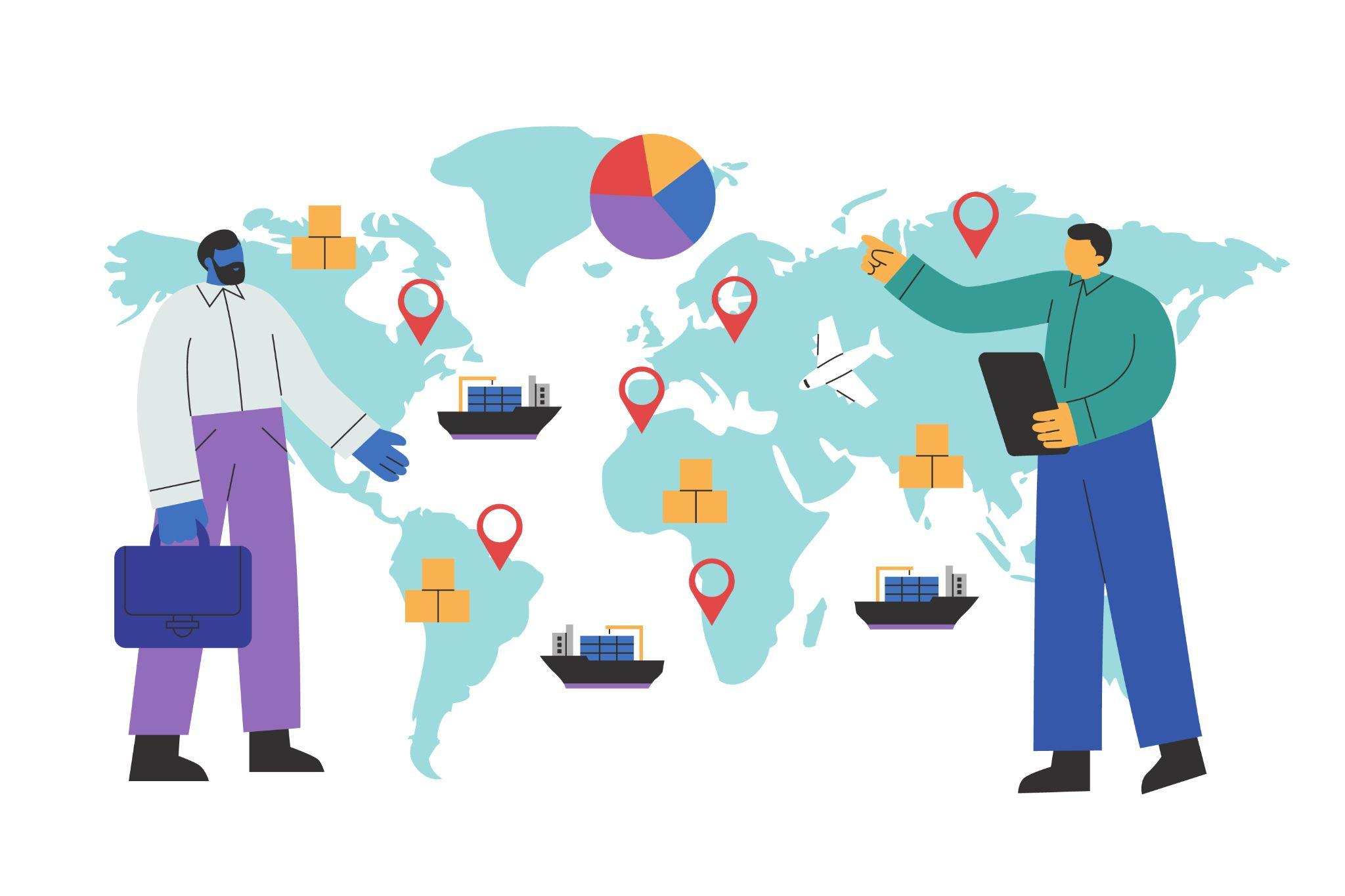Top 5 Ways to Use Global Import Export Data for Business Growth
In today's fast-paced, data-driven economy, staying ahead in international trade is no longer just about offering quality products or competitive pricing. The businesses that grow consistently are those that make smart, data-backed decisions. One of the most powerful tools to unlock growth in global trade is import export data.
Access to accurate and up-to-date global trade information can significantly improve your market strategy, supply chain efficiency, and competitiveness. Whether you're a manufacturer, exporter, importer, logistics consultant, or a trade analyst, leveraging the right import export data provider can turn raw trade numbers into profitable business insights.
In this article, we’ll explore the top 5 ways to use global import export data for business growth and how your company can benefit from it.
1. Identify New Markets and Buyers

Suggested Alt Tag- Identify New Markets and Buyers
One of the most common challenges exporters face is finding the right international buyers. Traditional methods like trade shows, B2B portals, and referrals may not always yield the best results. This is where global import export data becomes essential.
By analyzing global shipment records, trade volumes, and buyer information, businesses can identify:
- Countries with high demand for their products
- Active buyers importing specific HS codes
- Market trends based on seasonality or product categories
For example, if you’re exporting electronics, you can use trade data to see which countries are importing similar products, who the major buyers are, and what quantity they’re purchasing. This data-driven approach helps in targeting the right regions and building effective outreach strategies.
Tip: Partner with a reliable import export data provider to get access to verified and up-to-date buyer databases, including contact details and shipment history.
2. Analyze Competitors and Benchmark Performance
Understanding your competitors’ strategies is key to staying competitive. With global trade data, you can track who your competitors are trading with, what quantities they're exporting or importing, and at what price points.
Some valuable insights you can extract:
- Competitor’s top buyers or suppliers
- Monthly or quarterly trade volumes
- HS codes and product categories they deal in
- Pricing trends and shipping destinations
For example, if your competitor is consistently exporting large volumes to Southeast Asia, it could signal a growing market opportunity you’re missing out on.
Import export data allows you to benchmark your own performance against industry leaders and refine your sales and pricing strategies accordingly.
3. Monitor Product Demand and Global Trade Trends
Market demand is constantly shifting due to factors like global economic changes, consumer behavior, and government policies. Relying solely on past performance or gut instinct is no longer enough.
Global import export data helps you:
- Track trade trends across countries and regions
- Monitor rising or declining demand for specific goods
- Identify seasonal or cyclical trends in product shipments
- Prepare for upcoming market fluctuations
For instance, a surge in import data for renewable energy products may indicate a growing investment in green infrastructure in certain countries. As a result, companies dealing in solar panels, EV components, or wind turbines can align their production and sales strategies accordingly.
Pro Tip: A good import export data provider will offer tools like data visualization, HS code filters, and real-time trade alerts to help you spot trends faster.
4. Optimize Supply Chain and Sourcing Strategies
Global trade data isn't just for exporters; it's equally valuable for importers and procurement managers. Businesses can use import export data to identify efficient suppliers, evaluate logistics partners, and reduce sourcing costs.

Here’s how it helps:
- Discover suppliers in countries with favorable trade agreements
- Compare pricing from multiple exporters
- Identify over-reliance on a single supplier or country
- Analyze shipping routes and lead times
For example, if you import industrial parts, you might use the data to find suppliers in Vietnam offering better prices or faster shipping compared to China. You can also track how other businesses in your industry are sourcing raw materials and adjust your supply chain accordingly.
5. Ensure Compliance and Reduce Trade Risks
International trade comes with a fair share of risks — from customs delays and non-compliance penalties to dealing with fraudulent buyers or suppliers. Reliable import export data can help mitigate these risks.
Data insights can help you:
- Verify the authenticity of buyers and sellers
- Ensure correct HS code classification and documentation
- Track restricted goods or trade embargoes
- Monitor trade policies and customs duties in different countries
With the right import export data provider, you gain access to clean and legally sourced information that supports risk-free global trade.
Choosing the Right Import Export Data Provider
Now that you know how valuable global trade data can be, the next step is choosing the right import export data provider. Here are a few things to consider:
- Data Accuracy: Ensure the provider sources data from official customs, ports, or shipping agencies.
- Coverage: Choose a provider with wide country and product coverage across HS codes.
- Real-Time Updates: Regularly updated databases help you stay ahead in fast-changing markets.
- User Interface: Easy-to-use dashboards, filters, and download options can save hours of work.
- Support: Look for providers offering consultation, data analysis tools, and customer service.
Some leading data providers even offer trial access or sample reports to test the quality before you subscribe.
Conclusion
Global import export data is no longer just a tool for analysts — it's a growth engine for businesses of all sizes. From identifying new markets to monitoring trends and improving supply chains, the insights you can gain are invaluable.
Whether you're just entering the world of international trade or looking to scale your operations, partnering with a reliable import export data provider will give you the edge you need. In a competitive global market, smart decisions backed by data aren’t optional — they’re essential.






